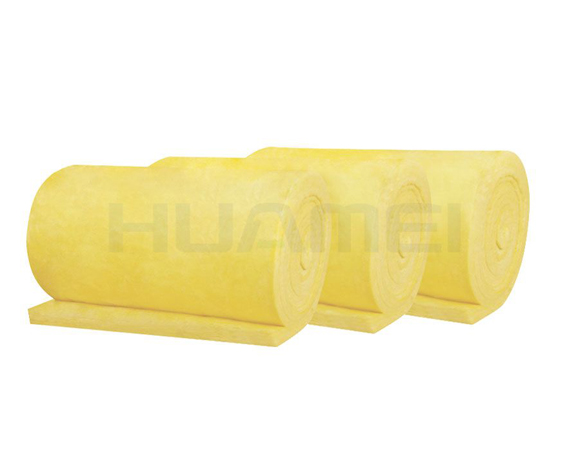E-mail: marketing@hbhuamei.com
In today's evolving world, materials used for insulation are sweeping the globe in terms of acoustics, thermals and more. These form part of the enhanced exterior, interior and decorative comfort. Glass wool is an insulating material with many applications in the home, whether it is part of a roof, false ceiling or drywall. According to ' John Wiley & Sons ' (authors of Webster's New World University Dictionary), "Glass wool is fine interwoven glass fibres used as filters and insulation."
Glass wool is an insulating material made from glass fibres called borosilicate glass, which is arranged using an adhesive to form a wool-like texture. It consists of silica sand, recycled glass and fixing agents, forming the perfect combination to provide good insulation and coating for houses.
The key property of glass wool is that it saves energy by effectively reducing the rate of heat transfer through the components of the house. When used in refrigerators, it resists corrosion by keeping the exposed surfaces of the refrigeration system above the dew point.

MLEX Glass Wool
The following are the properties of glass wool materials.
Glass wool is one of the best alternatives to the insulation materials provided for houses.
It is an excellent sound insulation material, able to absorb incident sound and is therefore used as a sound barrier to reduce sound transmission.
It can also be a good thermal insulator.
Glass wool is an environmentally friendly material as it is completely natural mineral wool, made from recycled glass fused with sand or broken glass.
It is made from recycled materials and is an inexpensive and cost-effective product.
It has good tensile strength and in a sense, it will be a durable material.
The most amazing property of glass wool is that it can resist fires of up to 300 o C.
Glass wool is mainly made from sand and recycled glass. Its extraordinary thermal properties help to save energy and combat climate change.
The manufacturing process of glass wool is given below.
1. Batch
The main components of glass wool are sand, soda ash, limestone and recycled glass; stored in silos. The process starts with weighing, mixing and pouring the components into the furnace. (Lintel)
Foil-Clad Glass Wool
2. Melting
The mixed components are then melted in an electric gas furnace at a temperature of over 1,400°C.
3. Fibrillation
The liquid glass obtained from the furnace then passes through the feeder into the fibrillation, where it is pushed through small holes with the help of a centrifugal rotator, thus forming fibres. These fibres are sprayed with adhesive and made into blankets.
4. Forming
The said fibre blanket passes through the transfer curing oven where it is compressed to the desired thickness.
5. Cutting
After the final thickness has been obtained, the blanket is then cut to the desired width. The cut is closed in the cut to obtain the final of the cycle to avoid waste.
6. Packaging
Before packing, the mats are rolled with the help of a rolling machine equipped at the end of the line. A palletiser is supplied to the board.
7. Palletizing
Depending on requirements, the glass wool can be compressed to ten times its palletizing volume. A total of 36 rolls of glass obtained during this process can be loaded onto a pallet. (soaking pit)
Copyright © Huamei Energy-saving Technology Group Co., Ltd. All Rights Reserved | Sitemap | Privacy Policy
Insulation solutions LIST: Insulation solutions LIST